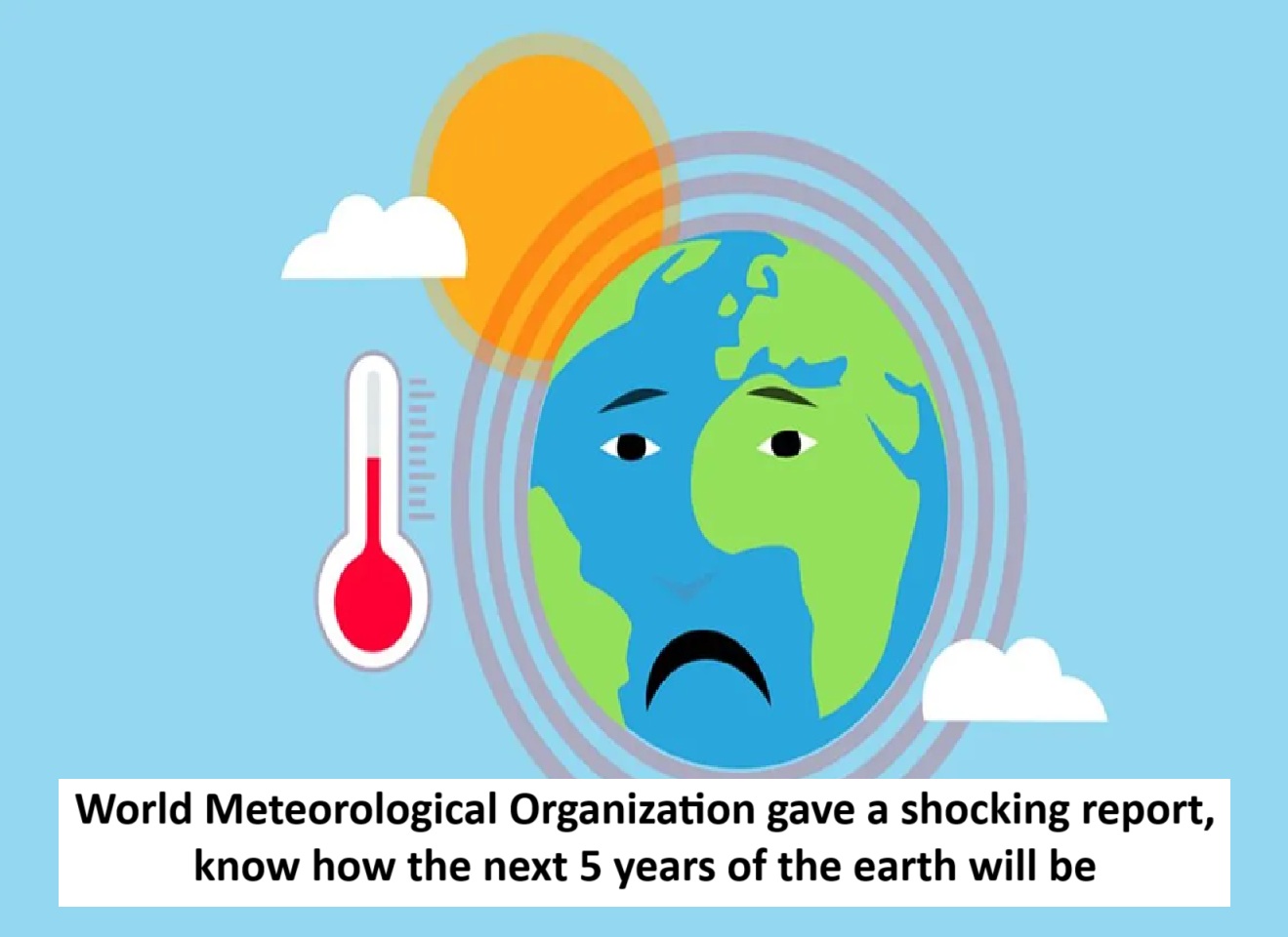
News Topical, Digital Desk : According to a new report by the World Meteorological Organization (WMO), there is a 70 percent chance that the average temperature of the Earth between 2025 and 2029 will be more than 1.5 degrees Celsius higher than the pre-industrial era (1850-1900). Apart from this, there is an 80 percent chance that at least one of the next 5 years will be hotter than 2024, which has been the hottest year ever. Let us tell you that the Earth's temperature is constantly increasing, due to which climate change is increasing the risk of submergence of countries and cities located at low altitudes above sea level.
2024: The hottest year ever
The report said that 2024 was the first year when the global average temperature was 1.5 degrees Celsius above the 1850-1900 baseline. This was the period when human activities, such as the burning of fossil fuels (coal, oil, gas), had not started to seriously affect the climate. At the 2015 Paris Climate Conference, countries set a goal of limiting global temperature rise to 1.5 degrees Celsius to avoid the most dangerous effects of climate change.
The 1.5°C limit in the Paris Agreement means a permanent increase in temperature over a long period of time (20-30 years). This year all countries are to submit their new National Climate Plans (NDCs) for 2031-2035 to the United Nations Office for Climate Change. The collective goal of these plans is to limit the temperature rise to 1.5°C.
What is in the WMO report?
According to the WMO report:
- The average global temperature for each year from 2025 to 2029 is expected to be 1.2 to 1.9 °C warmer than during 1850–1900.
- During this period, there is an 86 percent chance that the temperature will exceed 1.5 degrees Celsius in at least one year.
- There is a 70 percent chance that the overall 5-year average temperature will exceed 1.5°C.
WMO Deputy Secretary-General Ko Barrett said, 'The last 10 years have been the hottest years on record. Unfortunately, this report shows no signs of relief in the coming years. This means that the negative impact on our economy, daily life, ecosystems and the planet will increase. ' She stressed that continuous monitoring and prediction of climate is necessary, so that policymakers can get science-based information and we can adapt better.
Situation in South Asia and India
According to the WMO, South Asia has received above-normal rainfall in recent years (except in 2023), and this trend is expected to continue between 2025-2029, although some seasons may be dry. The India Meteorological Department (IMD) reported that India received above-normal rainfall during monsoon in 4 of the last 5 years. The IMD has predicted above-normal monsoon rainfall this year as well.
Impacts in the Arctic and other regions
The report says that in the Arctic, temperatures will rise three and a half times faster than the global average in the next 5 winters (November to March), i.e. about 2.4 degrees Celsius. Sea ice will decrease further in areas such as the Barents Sea, Bering Sea and Sea of Okhotsk. Between 2025-2029, the Sahel, northern Europe, Alaska and northern Siberia are expected to receive above-normal rainfall from May to September, while the Amazon region will be drier than normal.
Read More: 'Anyone can file a case', those who damage public property will no longer be spared; SC orders
--Advertisement--

 Share
Share



